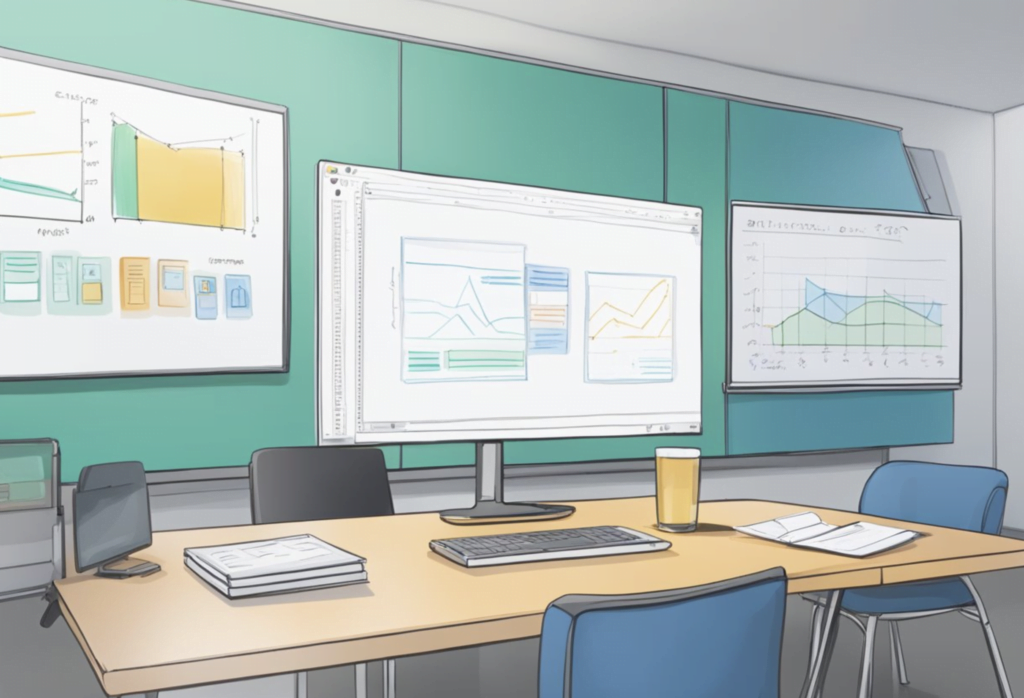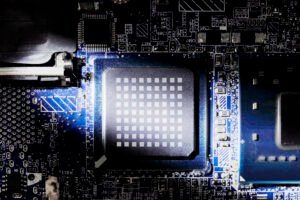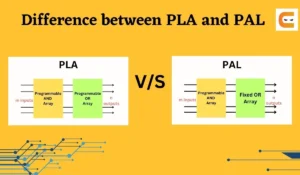FPGA (Field Programmable Gate Array) is a popular technology in the field of digital electronics. It is a type of integrated circuit that can be programmed to perform specific tasks.
FPGA technology has gained immense popularity in recent years, and many companies are now looking for professionals who are skilled in FPGA design and development.
As a result, FPGA interview questions have become an essential part of the recruitment process.
The interview process for FPGA engineers is often rigorous and technical. Interviewers are looking for candidates who not only have a good understanding of FPGA technology but are also able to apply their knowledge to real-world problems.
To succeed in an FPGA interview, candidates need to have a solid understanding of hardware description languages (HDLs) such as VHDL and Verilog, as well as experience with FPGA design and development.
Key Takeaways
- Understanding FPGA technology is essential to succeed in an FPGA interview.
- Candidates need to have a solid understanding of hardware description languages (HDLs) such as VHDL and Verilog.
- To succeed in an FPGA interview, candidates need to be able to apply their knowledge to real-world problems.
Understanding FPGAs
FPGAs or Field Programmable Gate Arrays are digital hardware devices that can be programmed and reprogrammed to perform specific tasks.
They are used in a wide range of applications, including signal processing, video processing, networking, and embedded systems.
In this section, we will discuss the basics of FPGAs, their architecture, design process, vendors and tools, applications, and challenges in FPGA design.
FPGA Basics
An FPGA is a logic device that consists of configurable logic blocks (CLBs), I/O pins, and programmable interconnects.
CLBs are the building blocks of an FPGA and contain Look-Up Tables (LUTs) and flip-flops. LUTs are used to implement mathematical or logical functions, while flip-flops are used to store data.
FPGAs also have RAM blocks, including distributed RAM and block RAM, which can be used for storing data.
FPGA Architecture
The FPGA architecture consists of logic blocks, I/O blocks, and programmable interconnects.
Logic blocks are used to implement combinational and sequential logic functions, while I/O blocks provide connectivity to the outside world.
Programmable interconnects provide the means to connect logic blocks and I/O blocks.
FPGA Design Process
The FPGA design process involves several stages, including HDL design, schematic design, implementation, simulation, and timing analysis.
Hardware Description Language (HDL), such as Verilog and VHDL, is used to describe the functionality of the design. Schematic design involves drawing a graphical representation of the design.
Implementation involves mapping the HDL or schematic design to the FPGA architecture. Simulation involves verifying the functionality of the design.
Timing analysis involves ensuring that the design meets its timing requirements.
FPGA Vendors and Tools
There are several FPGA companies and vendors, including Altera and Xilinx. Each vendor provides its own set of tools for FPGA design, including Integrated Synthesis Environment (ISE), Vivado, and Quartus.
These tools provide the means to design, simulate, implement, and verify FPGA designs.
FPGA vs ASIC
FPGAs are different from Application-Specific Integrated Circuits (ASICs) in that they are programmable and reprogrammable, while ASICs are designed for a specific application.
FPGAs offer flexibility in design, size, and power consumption, while ASICs offer optimization in terms of chip size and power consumption.
FPGA Applications
FPGAs are used in a wide range of applications, including signal processing, video processing, networking, and embedded systems. They are also used in medical devices, where timing constraints, area utilization, power consumption, and security are critical.
Challenges in FPGA Design
FPGA design involves several challenges, including timing closure, optimization, documentation, and troubleshooting.
Timing closure involves ensuring that the design meets its timing requirements. Optimization involves minimizing the area utilization and power consumption of the design.
Documentation involves keeping track of the design process and providing documentation for future reference. Troubleshooting involves identifying and fixing problems in the design.
FPGA Development Best Practices
FPGA development best practices include using a PLL for clock generation, using UART or SPI for communication, using synchronous resets instead of asynchronous resets, avoiding metastability by crossing clock domains properly, using the map-timing option for better timing optimization, and using boundary scan (JTAG) for debugging.
Advanced FPGA Concepts
Advanced FPGA concepts include dynamic timing, which involves timing analysis after the implementation stage, and static timing, which involves timing analysis before the implementation stage.
Other concepts include crossing clock domains, which involves transferring data between different clock domains, and timing constraints, which involve setting timing requirements for the design.
Overall, understanding FPGAs is essential for FPGA engineers and designers.
By understanding the basics, architecture, design process, vendors and tools, applications, challenges, best practices, and advanced concepts, FPGA engineers and designers can develop high-quality FPGA designs that meet their design requirements.
Hardware Description Languages (HDLs)
Introduction to HDLs
Hardware Description Languages (HDLs) are programming languages used to describe the behavior of digital circuits and systems.
HDLs allow designers to describe the functionality of a circuit at a higher level of abstraction, making the design process more efficient.
Verilog vs VHDL
Verilog and VHDL are the two most commonly used HDLs in the FPGA industry.
Verilog is a C-like language, while VHDL is more verbose and resembles Ada.
Both languages are used to describe the behavior of digital circuits and systems, but they have different syntax and semantics.
Synthesizable HDL Code
To implement an FPGA design, the HDL code must be synthesizable, meaning that it can be translated into a netlist of gates that can be programmed onto the FPGA.
Synthesizable HDL code must follow certain guidelines, such as avoiding certain constructs that cannot be synthesized, like delays and procedural assignments.
HDL Simulation and Testing
Simulation tools are used to verify the functionality of an FPGA design before it is implemented on the FPGA.
HDL simulation involves creating test benches, which are modules that stimulate the design with input signals and verify the output signals.
Simulation tools can also be used to test the timing of the design and to debug any issues that arise during the simulation process.
Debugging tools such as oscilloscopes and logic analyzers can also be used to verify the design and troubleshoot any issues that arise during the implementation process.
Overall, HDLs are a critical component of FPGA design and implementation.
Designers must have a strong understanding of HDLs and the associated simulation and testing tools to effectively design and implement FPGA designs.
FPGA Interview Questions Preparation
Preparing for an FPGA engineer interview can be a daunting task, especially if you are not familiar with the technical concepts and design methodologies used in FPGA design.
However, with the right preparation and knowledge, you can ace the interview and land your dream job.
FPGA Interview Questions and Answers:
One of the best ways to prepare for an FPGA engineer interview is to familiarize yourself with the most common interview questions.
This will help you to anticipate the questions that the interviewer might ask and prepare your answers accordingly. Some common FPGA engineer interview questions include:
- What is an FPGA, and how does it differ from other types of hardware?
- What are the benefits of using an FPGA in a design?
- What are the key features of an FPGA?
- What is the design flow for an FPGA, and what are the challenges in designing an FPGA?
- How do you verify the design of an FPGA, and what tools do you use for debugging and troubleshooting?
Question 1:- What is an FPGA?
Answer:- An FPGA, or Field-Programmable Gate Array, is a reconfigurable integrated circuit that allows users to customize digital circuits after manufacturing. It offers flexibility and adaptability for various applications.
Question 2:- What are the benefits of using an FPGA?
Answer:- Using an FPGA provides benefits like high performance, low latency, and energy efficiency. Its reprogrammable nature allows rapid prototyping, reducing time-to-market. FPGAs excel in parallel processing tasks, making them ideal for diverse applications.
Question 3:- What are the key features of an FPGA?
Answer:- Key features of an FPGA include reconfigurability, parallel processing capabilities, and low latency. These devices also offer high-speed data processing, making them suitable for applications requiring real-time responsiveness.
Question 4:- How does an FPGA work?
Answer:- FPGAs consist of programmable logic blocks and interconnects. Users program the device by defining the connections between these blocks. Configuration is stored in memory, enabling the FPGA to function according to the specified digital circuit.
Question 5:- What are the applications of an FPGA?
Answer:- FPGAs find applications in diverse fields, such as telecommunications, signal processing, aerospace, and automotive industries. They are used for tasks like digital signal processing, encryption, and image processing due to their high processing capabilities.
Question 6:- What is the design flow for an FPGA?
Answer:- The design flow for an FPGA involves steps like specification, design entry, synthesis, implementation, and verification. After these stages, the bitstream is generated and loaded onto the FPGA, configuring it to perform the desired functions.
Technical Concepts Review
In addition to common FPGA interview questions, it is important to review the technical concepts and design methodologies used in FPGA design.
This includes topics such as logic design, digital circuits, RAM, processors, microcontrollers, flip-flops, hold time, setup, static timing, clock signal, synchronous and asynchronous design, and timing constraints.
Design and Debugging Scenarios
Another important aspect of FPGA interview preparation is to practice design and debugging scenarios.
This will help you to demonstrate your problem-solving skills and show the interviewer how you approach real-world design and debugging challenges.
Some common scenarios include optimizing power consumption, area utilization, and timing constraints.
Optimization Strategies
Optimization is a critical aspect of FPGA design, and interviewers will be looking for candidates who can demonstrate their ability to optimize designs for performance, power, and area utilization.
Some common optimization strategies include pipelining, parallel processing, and resource sharing.
Real-World Applications Discussion
Finally, it is important to be familiar with real-world applications of FPGA technology, such as embedded systems, signal processing, networking, video processing, and medical devices.
This will help you to demonstrate your understanding of how FPGA technology can be applied in different industries and contexts.
In summary, preparing for an FPGA engineer interview requires a combination of technical knowledge, problem-solving skills, and an understanding of real-world applications.
By reviewing common FPGA interview questions, technical concepts, design and debugging scenarios, optimization strategies, and real-world applications, you can demonstrate your expertise and land your dream job.
FPGA Interview Simulation

FPGA Interview Questions and Answers
Preparing for an FPGA interview can be a daunting task. One of the best ways to prepare is to simulate the FPGA interview process.
This section will provide an overview of the different types of questions that may be asked during an FPGA interview simulation.
Mock Interview Questions
Mock FPGA interview questions can help FPGA engineers practice their responses to common FPGA engineer interview questions.
These questions can cover topics such as the basics of FPGA design, digital logic, and the design flow for an FPGA. Some examples of mock FPGA interview questions include:
- What is an FPGA?
- What are the benefits of using an FPGA?
- What are the key features of an FPGA?
- How does an FPGA work?
- What are the applications of an FPGA?
- What is the design flow for an FPGA?
Technical Problem-Solving
Technical problem-solving questions are designed to test the FPGA engineer’s ability to debug and optimize FPGA designs.
These questions can cover topics such as the challenges of designing an FPGA, problem-solving techniques, and optimization strategies.
Some examples of technical problem-solving questions include:
- What are some common challenges in designing an FPGA?
- How do you verify the design of an FPGA?
- What are some debugging techniques for FPGA designs?
- What are some optimization strategies for FPGA designs?
Scenario-Based Questions
Scenario-based questions are designed to test the FPGA engineer’s ability to apply their FPGA design knowledge to real-world scenarios.
These questions can cover topics such as troubleshooting, optimization, and design implementation. Some examples of scenario-based questions include:
- You have been asked to design an FPGA for a new product. What are the key considerations you would take into account during the design process?
- You have been given an FPGA design that is not meeting performance requirements. What steps would you take to optimize the design?
- You have been asked to troubleshoot an FPGA design that is not working as expected. What steps would you take to identify and fix the problem?
Behavioral Questions
Behavioral questions are designed to test the FPGA engineer’s ability to work effectively in a team and communicate their ideas clearly.
These questions can cover topics such as documentation, teamwork, and industry trends. Some examples of behavioral questions include:
- Can you describe a time when you had to work with a team to solve a complex problem?
- How do you ensure that your FPGA design documentation is clear and concise?
- What industry trends are you currently following in the field of FPGA design?
Frequently Asked Questions
Can you explain the basic architecture of an FPGA?
FPGAs consist of a matrix of programmable logic blocks (PLBs) surrounded by programmable input/output (I/O) blocks.
The PLBs are connected to each other and the I/O blocks through programmable interconnects.
The PLBs can be programmed to perform a variety of digital logic functions, allowing the FPGA to be customized to a specific application.
How do FPGAs differ from microprocessors in terms of functionality?
Microprocessors are general-purpose processors that can execute a wide range of instructions, while FPGAs are highly specialized and can be programmed to perform specific functions. FPGAs are typically used in applications that require high performance and low latency, such as high-frequency trading.
What are the common applications of FPGAs in high-frequency trading (HFT)?
FPGAs are used in HFT to accelerate the processing of market data and to execute trades faster than competing traders. Common applications of FPGAs in HFT include order book matching, data filtering, and risk management.
Could you describe the role of HDLs, such as Verilog or VHDL, in FPGA development?
Hardware description languages (HDLs) are used to describe the behavior of digital circuits. HDLs such as Verilog or VHDL are commonly used in FPGA development to describe the functionality of the PLBs and interconnects. The HDL code is then synthesized into a configuration file that can be loaded onto the FPGA.
What are the considerations for choosing between FPGA and ASIC for a project?
FPGAs offer greater flexibility and faster time-to-market than ASICs, but ASICs can offer higher performance and lower power consumption. The choice between FPGA and ASIC depends on the specific requirements of the project, including performance, power consumption, and cost.
How do you approach power and thermal management in FPGA design?
Power and thermal management are critical considerations in FPGA design. Techniques such as clock gating, power gating, and dynamic voltage and frequency scaling can be used to reduce power consumption. Thermal management techniques such as heat sinks and fans can be used to dissipate heat generated by the FPGA.


![What is FPGA Introduction to FPGA Basics [2023] computer-chip-dark-background-with-word-intel-it](https://fpgainsights.com/wp-content/uploads/2023/06/computer-chip-dark-background-with-word-intel-it-300x171.jpg)









